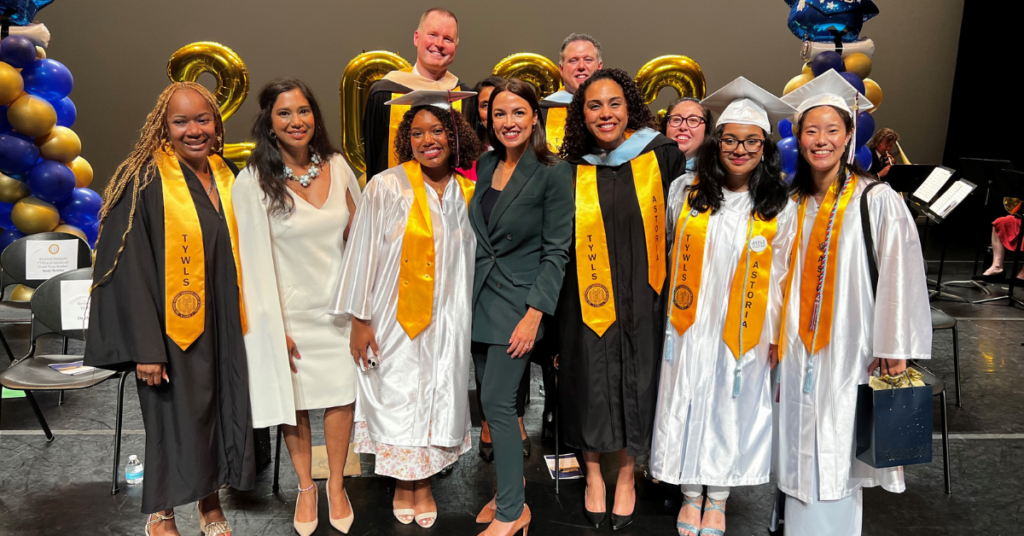Twenty days before teachers return to our school this September, in the sweltering heat of the hottest summer in 120,000 years, at 5:01pm on the final day of the official deadline for teachers to notify principals of transfers, I received yet another teacher resignation. The Great Resignation continues, and education has turned into the Serengeti following the seasonal rains, like watching the wildebeest migration in real life.
The largest migration at my school, The Young Women’s Leadership School of Astoria, occurred last year, as it did in so many schools across the country. According to the National Center for Education Statistics, 45% of schools in the United States started understaffed last October, and that figure is likely to be similar this October.
The challenges of the teacher shortage leave an administrator like me vulnerable to ignoring their own moral compass. Just like in the Serengeti, poaching occurs when school leaders feel they must resort to it. It’s hard when you realize in the dark annals of hidden text messages, folks are reaching out to your teachers, doing marital dances, offering what they can within contract bounds to sway them to depart and come find something new.
We are just trying to educate our children. Why can’t it be easier? It’s time for districts, states, and our national system to rethink the pipeline so that we can attract people to this profession. Let’s not wait until it’s a matter of national security to determine that we need to hire smart, dedicated teachers and pay them well in order to have a workforce that can navigate the challenges of AI, global food crises, and climate change, among other pressing issues.
Strengthening the Pipeline
Schools of education should be supported with federal and state funding to recruit the very brightest undergraduates. Incentives should include free tuition and housing, especially for teachers in high need areas. My alma mater, Queens College, City University of New York, seems to have it figured out with its Time 2000 program for mathematics teachers. We need this program replicated across private and public universities, and we need teacher recruitment to begin in high school.
Currently, I have two vacancies for Spanish teachers, in a city where 2.4 million people identify as Latino. What if English learners in our schools were nurtured and encouraged to participate in a teacher preparation program? What if they or their Spanish-speaking parents could participate as student teachers in our high schools and enter a free teacher preparation program?
If you as a school leader believe in serving children, then you believe in serving children everywhere, not just in your school. The work of education in this country is hard enough without feeling forced to poach teachers. Which brings me to my next question: What if districts were able to share teachers across geographic areas in content areas with teacher shortages, such as physics, math, and Spanish? What if we gave teachers incentives (stipends of $25,000 to $50,000) to teach throughout certain geographic areas? In New York City, we have a $37 billion education budget, yet we can’t make space to pay hardworking teachers in shortage areas.
As a principal, I am always recruiting. I have developed a rich social media platform where I seek out alumnae, highlight their accomplishments, and closely follow their journeys, especially if those journeys can translate into opportunities for my current students.

This fall I plan to hire a former student as a substitute teacher, while she pursues her career and technical education license; eventually she will become a digital media teacher at our school. This approach takes time and patience and requires playing more of the long game in terms of staffing. Besides encouraging current students to become teachers, look to your staff and see beyond their current roles to encourage their growth. Is there a cafeteria worker or clerical support person who could use a nudge to apply to a teacher preparation program?
If You Pay Them, They Will Come
As part of my work with NASSP, I co-facilitate the School Leaders of Color Network, a group that gathers monthly online to cheer each other on and share resources. During a recent session, we invited one young man, the son of one of our members, and asked him, “Why aren’t more candidates who are Black and from diverse backgrounds going into teaching?” The answer was simple: money. He explained that if a young person of color is the first in their family to go to college, they would rather not choose a profession with low pay.
Diverse candidates are more attracted to higher-paying areas—medicine, law, technology, and finance—since they may carry the generational weight of moving an entire family out of poverty. It’s no secret that teachers often take on second jobs. Until I became a principal, I did too. Moonlighting, however, cannot be the norm, and the salary should not deter people of color from entering this profession.
We can do better. Let’s raise our voices this year to teachers being paid more, so the brightest are attracted to the profession and all teachers can do just one job—the job they love.
Learn more about NASSP’s School Leaders of Color Network.

